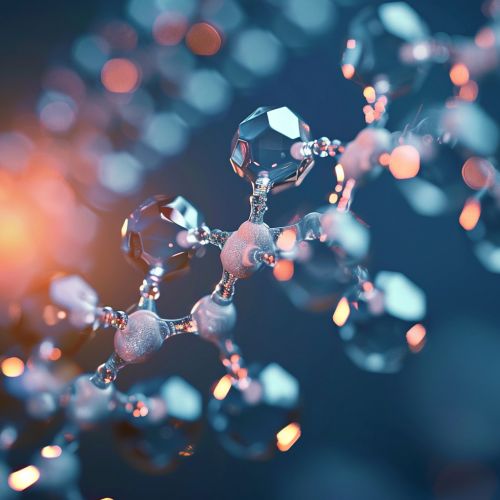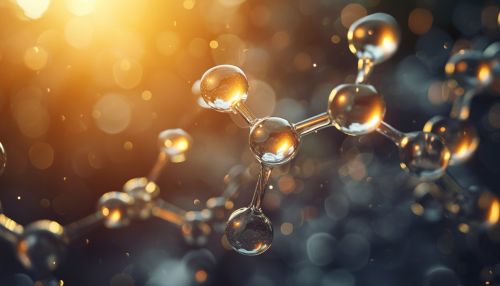Geranylgeranyl pyrophosphate
Introduction
Geranylgeranyl pyrophosphate (GGPP) is a significant intermediate in the biosynthesis of several classes of isoprenoids. It is a 20-carbon molecule that is produced in the mevalonate pathway and the non-mevalonate pathway, also known as the MEP/DOXP pathway. The molecule is a critical precursor in the synthesis of various biomolecules, including terpenes, terpenoids, carotenoids, and prenylated proteins.


Biosynthesis
The biosynthesis of geranylgeranyl pyrophosphate involves the condensation of isopentenyl pyrophosphate (IPP) and dimethylallyl pyrophosphate (DMAPP). This process is catalyzed by the enzyme geranylgeranyl pyrophosphate synthase.
Mevalonate Pathway
In the mevalonate pathway, three molecules of IPP are condensed with one molecule of DMAPP to form geranylgeranyl pyrophosphate. The reaction is catalyzed by geranylgeranyl pyrophosphate synthase. The mevalonate pathway is prevalent in animals, fungi, and the cytosol of plants.
MEP/DOXP Pathway
In the MEP/DOXP pathway, which is found in most bacteria, algae, and the plastids of plants, geranylgeranyl pyrophosphate is synthesized from 1-deoxy-D-xylulose 5-phosphate (DOXP) and 2-C-methyl-D-erythritol 4-phosphate (MEP).
Functions
Geranylgeranyl pyrophosphate is a critical precursor in the synthesis of various biomolecules.
Terpenes and Terpenoids
Geranylgeranyl pyrophosphate is a precursor in the biosynthesis of terpenes and terpenoids, which are a large and diverse class of naturally occurring organic chemicals. These compounds are used in a variety of applications, from pharmaceuticals to fragrances.
Carotenoids
In the biosynthesis of carotenoids, two molecules of geranylgeranyl pyrophosphate are condensed to form phytoene, a key intermediate in the carotenoid pathway. Carotenoids are pigments that are responsible for the yellow, orange, and red colors in plants, and they also have important roles in human nutrition and health.
Prenylated Proteins
Geranylgeranyl pyrophosphate is also involved in the prenylation of proteins. Prenylation is a post-translational modification that involves the addition of hydrophobic molecules to a protein. This modification allows the protein to anchor into cell membranes, which can influence the protein's function and location within the cell.
